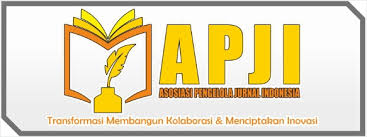A Case Report of Prolonged Bradycardia in Clay Shoveler’s Fracture: Presentation and Narrative Review
Abstract
A spinal cord injury is an uncommon discovery in a clay-shoveler’s fracture. Multiple syncope could be caused by bradycardia which followed a spinal cord injury. These combination findings adds its rarity.  This case report aim to share awareness among physicians of the  rare complication of spinal cord injury and its management. This descriptive report also narratively review other literature. Physicians should aware of SCIWORA (Spinal Cord Injury Without Radiographic Abnormalities), neurogenic shock and prolonged bradycardia as one of its complications and it may warrant a cardiac pace maker to avoid cardiac arrest and other complication.
Keywords
Full Text:
PDFReferences
Boese, C. K., & Lechler, P. (2013). Spinal cord injury without radiologic abnormalities in adults: A systematic review. Journal of Trauma and Acute Care Surgery, 75(2), 320–330. https://doi.org/10.1097/TA.0b013e31829243c9
Feldman, V., & Astri, F. (2001). An atypical clay shoveler’s fracture: A case report. J Can Chiropr Assoc, 45(4), 213–221.
Ghaffari-Rafi, A., Peterson, C., Leon-Rojas, J. E., Tadokoro, N., Lange, S. F., Kaushal, M., Tetreault, L., Fehlings, M. G., & Martin, A. R. (2021). The Role of Magnetic Resonance Imaging to Inform Clinical Decision-Making in Acute Spinal Cord Injury: A Systematic Review and Meta-Analysis. Journal of Clinical Medicine, 10(21), 4948. https://doi.org/10.3390/jcm10214948
Hawayek, B., Lucasti, C., Patel, D., Maraschiello, M., & Kowalski, J. (2021). Cardiac asystole following high spinal cord injury: A case report. Journal of Spine Surgery (Hong Kong), 7(2), 233–237. https://doi.org/10.21037/jss-20-669
Hetsroni, I., Mann, G., Dolev, E., Morgenstern, D., & Nyska, M. (2005). Clay Shoveler’s Fracture in a Volleyball Player: Revealing an Unusual Source of Pain. The Physician and Sportsmedicine, 33(7), 38–42. https://doi.org/10.3810/psm.2005.07.144
Jabola, R., Boswell, B., Lutz, R., Casey, J., & Ceraulo, A. (2021). Transient Quadriplegia: A Case-Based Approach to Cervical Trauma. Clinical Practice and Cases in Emergency Medicine, 2(5), 163–166. https://doi.org/10.5811/cpcem.2020.12.49364
Jin, C., Zhao, L., Wu, J., Jia, L., Cheng, L., & Xie, N. (2021). Traumatic cervical spinal cord injury: Relationship of MRI findings to initial neurological impairment. European Spine Journal: Official Publication of the European Spine Society, the European Spinal Deformity Society, and the European Section of the Cervical Spine Research Society, 30(12), 3666–3675. https://doi.org/10.1007/s00586-021-06996-w
Karim, F., Chang, P., Garrison, C., & Steiner, M. (2020). Role of Theophylline in Management of Bradycardia Secondary to High Cervical Spinal Cord Injury in a Seven-Year-Old Child: Case Report and a Review of Literature. Cureus, 12(10), e10941. https://doi.org/10.7759/cureus.10941
Khanpara, S., Ruiz-Pardo, D., Spence, S. C., West, O. C., & Riascos, R. (2020). Incidence of cervical spine fractures on CT: A study in a large level I trauma center. Emergency Radiology, 27(1), 1–8. https://doi.org/10.1007/s10140-019-01717-9
Kiriği, K. K. (2015). CLAY-SHOVELER’S FRACTURE FOLLOWING A FALL FROM HEIGHT. The Journal of Turkish Spinal Surgery, 26(1), 57–60.
Konovalov, N., Peev, N., Zileli, M., Sharif, S., Kaprovoy, S., & Timonin, S. (2020). Pediatric Cervical Spine Injuries and SCIWORA: WFNS Spine Committee Recommendations. Neurospine, 17(4), 797–808. https://doi.org/10.14245/ns.2040404.202
Ludwisiak, K., Podgórski, M., Biernacka, K., StefaÅ„czyk, L., Olewnik, Å., Majos, A., & Polguj, M. (2019). Variation in the morphology of spinous processes in the cervical spine – An objective and parametric assessment based on CT study. PLOS ONE, 14(6), e0218885. https://doi.org/10.1371/journal.pone.0218885
Martineau, J., Goulet, J., Richard-Denis, A., & Mac-Thiong, J.-M. (2019). The relevance of MRI for predicting neurological recovery following cervical traumatic spinal cord injury. Spinal Cord, 57(10), 866–873. https://doi.org/10.1038/s41393-019-0295-z
Mayà -Casalprim, G., Ortiz, J., Tercero, A., Reyes, D., Iranzo, Ã., Santamaria, J., Bosch, X., & Gaig, C. (2020). Cervical spinal cord injury by a low-impact trauma as an unnoticed cause of cardiorespiratory arrest. European Heart Journal. Case Reports, 4(2), 1–6. https://doi.org/10.1093/ehjcr/ytaa044
Mohanty, S. P., Bhat, N. S., Singh, K. A., & Bhushan, M. (2013). Cervical spinal cord injuries without radiographic evidence of trauma: A prospective study. Spinal Cord, 51(11), 815–818. https://doi.org/10.1038/sc.2013.87
Olivier, E. C., Muller, E., & Janse van Rensburg, D. C. (2016). Clay-Shoveler Fracture in a Paddler: A Case Report. Clinical Journal of Sport Medicine, 26(3), e69–e70. https://doi.org/10.1097/JSM.0000000000000243
Pinto, E. M., Teixeira, A., Frada, R., Sousa, R., Veigas, T., & Miranda, A. (2022). Multiple contiguous spinous process fractures, a case report and literature review. Trauma Case Reports, 42, 100683. https://doi.org/10.1016/j.tcr.2022.100683
Posthuma de Boer, J., van Wulfften Palthe, A. F. Y., Stadhouder, A., & Bloemers, F. W. (2016). The Clay Shoveler’s Fracture: A Case Report and Review of the Literature. The Journal of Emergency Medicine, 51(3), 292–297. https://doi.org/10.1016/j.jemermed.2016.03.020
Shaikh, N., Rhaman, M., Raza, A., Shabana, A., Malstrom, M., & Al-Sulaiti, G. (2016). Prolonged bradycardia, asystole and outcome of high spinal cord injury patients: Risk factors and management. Asian Journal of Neurosurgery, 11(4), 427. https://doi.org/10.4103/1793-5482.146394
Wecht, J. M., Harel, N. Y., Guest, J., Kirshblum, S. C., Forrest, G. F., Bloom, O., Ovechkin, A. V., & Harkema, S. (2020). Cardiovascular Autonomic Dysfunction in Spinal Cord Injury: Epidemiology, Diagnosis, and Management. Seminars in Neurology, 40(05), 550–559. https://doi.org/10.1055/s-0040-1713885
Yee, B., Nightingale, T. E., Ramirez, A. L., Walter, M., & Krassioukov, A. V. (2022). Heart rate changes associated with autonomic dysreflexia in daily life of individuals with chronic spinal cord injury. Spinal Cord, 60(11), 1030–1036. https://doi.org/10.1038/s41393-022-00820-y
DOI: http://dx.doi.org/10.30742/jikw.v12i1.2234
Refbacks
- There are currently no refbacks.
Copyright (c) 2023 wienorman gunawan

This work is licensed under a Creative Commons Attribution-NonCommercial 4.0 International License.
Jurnal Ilmiah Kedokteran Wijaya Kusuma is licensed under a Creative Commons Attribution-NonCommercial 4.0 International License

Â









